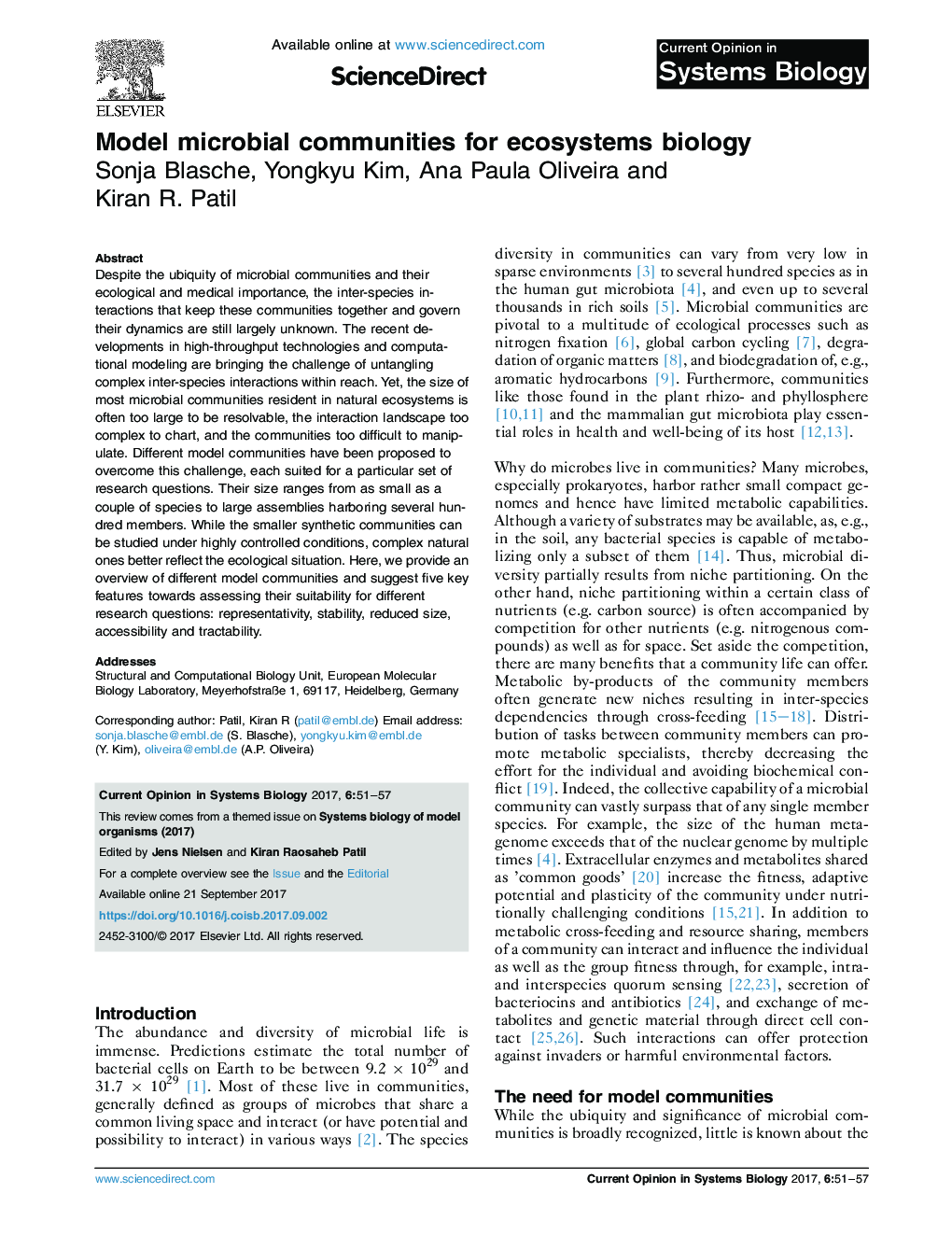| کد مقاله | کد نشریه | سال انتشار | مقاله انگلیسی | نسخه تمام متن |
|---|---|---|---|---|
| 8918086 | 1642817 | 2017 | 7 صفحه PDF | دانلود رایگان |
عنوان انگلیسی مقاله ISI
Model microbial communities for ecosystems biology
ترجمه فارسی عنوان
جوامع میکروبی مدل برای زیست شناسی اکوسیستم
دانلود مقاله + سفارش ترجمه
دانلود مقاله ISI انگلیسی
رایگان برای ایرانیان
ترجمه چکیده
با وجود همه جا جوامع میکروبی و اهمیت اکولوژیکی و پزشکی آنها، تعاملات بین گونه ای که این جوامع را با هم ادغام می کنند و پویایی آنها را مدیریت می کنند، هنوز تا حد زیادی ناشناخته است. تحولات اخیر در فن آوری های با توان بالا و مدل سازی محاسباتی، چالش کشف توازن پیچیده بین گونه ها را در دسترس می گذارد. با این حال، اندازه بسیاری از جوامع میکروبی که در اکوسیستم های طبیعی زندگی می کنند، اغلب برای حل و فصل بسیار زیاد است، چشم انداز تعامل بسیار پیچیده است و جوامع برای دستکاری آن دشوار است. جوامع مختلف مدل برای غلبه بر این چالش پیشنهاد شده است، هر کدام برای مجموعه ای خاص از سوالات تحقیقاتی مناسب هستند. اندازه آنها از چند تا گونه به مجموعه های بزرگ که دارای چند صد اعضای آن می باشد، متغیر است. در حالی که جوامع کوچکتر مصنوعی را می توان تحت شرایط بسیار کنترل شده مورد مطالعه قرار داد، طبقات پیچیده طبیعی بهتر از وضعیت اکولوژیکی منعکس می شوند. در اینجا، ما یک مرور کلی از جوامع مختلف مدل ارائه می دهیم و پنج ویژگی کلیدی را برای ارزیابی مناسب بودن آنها برای سوالات مختلف تحقیق ارائه می دهیم: نمایندگی، ثبات، کاهش اندازه، قابلیت دسترسی و قابلیت اطمینان.
موضوعات مرتبط
مهندسی و علوم پایه
مهندسی کامپیوتر
علوم کامپیوتر (عمومی)
چکیده انگلیسی
Despite the ubiquity of microbial communities and their ecological and medical importance, the inter-species interactions that keep these communities together and govern their dynamics are still largely unknown. The recent developments in high-throughput technologies and computational modeling are bringing the challenge of untangling complex inter-species interactions within reach. Yet, the size of most microbial communities resident in natural ecosystems is often too large to be resolvable, the interaction landscape too complex to chart, and the communities too difficult to manipulate. Different model communities have been proposed to overcome this challenge, each suited for a particular set of research questions. Their size ranges from as small as a couple of species to large assemblies harboring several hundred members. While the smaller synthetic communities can be studied under highly controlled conditions, complex natural ones better reflect the ecological situation. Here, we provide an overview of different model communities and suggest five key features towards assessing their suitability for different research questions: representativity, stability, reduced size, accessibility and tractability.
ناشر
Database: Elsevier - ScienceDirect (ساینس دایرکت)
Journal: Current Opinion in Systems Biology - Volume 6, December 2017, Pages 51-57
Journal: Current Opinion in Systems Biology - Volume 6, December 2017, Pages 51-57
نویسندگان
Sonja Blasche, Yongkyu Kim, Ana Paula Oliveira, Kiran R. Patil,
